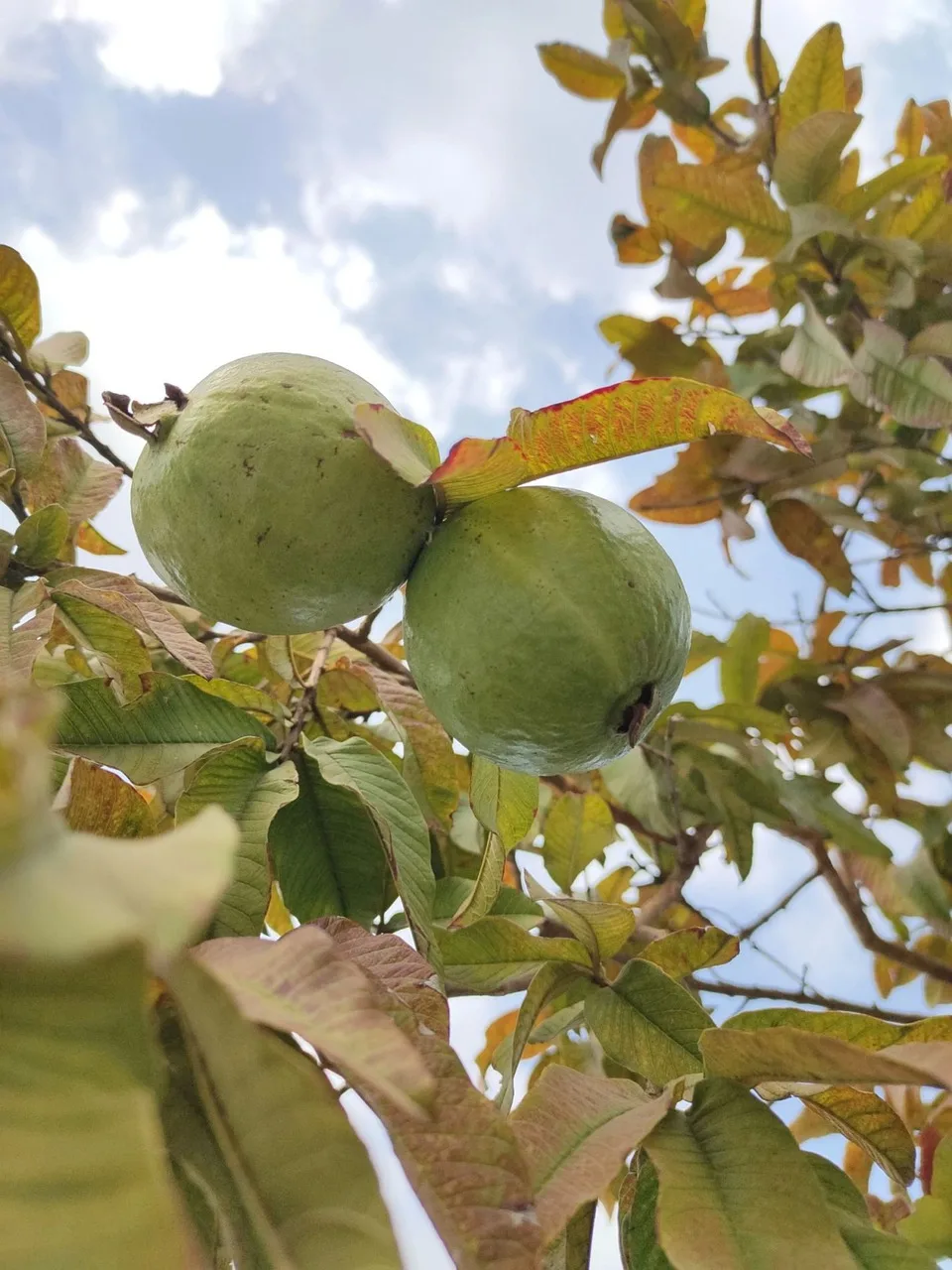
Guava fruit trees, scientifically known as Psidium guajava, are a delightful addition to any garden or orchard. Native to tropical regions, these trees produce delicious, aromatic fruits that are packed with nutrients. Guava trees are not only prized for their fruits but also for their attractive appearance and sweet fragrance. In this ultimate guide, we will take you through the step-by-step process of growing and caring for guava fruit trees, ensuring that you have a successful and bountiful harvest.
Benefits of Growing Guava Fruit Trees
There are numerous benefits to growing guava fruit trees. Firstly, guava fruits are rich in essential vitamins and minerals, making them a healthy addition to your diet. They are particularly high in vitamin C, which is important for boosting the immune system and promoting overall well-being. Additionally, guava fruits contain dietary fiber, which aids in digestion and helps maintain a healthy weight.
Furthermore, guava trees are relatively low-maintenance and easy to grow, making them suitable for both experienced and novice gardeners. They are adaptable to various soil types and can tolerate a wide range of climatic conditions. Guava trees also have a long lifespan, with some varieties living up to 40 years or more. With proper care and attention, you can enjoy the benefits of guava trees for many years to come.
Choosing the Right Guava Variety
When it comes to selecting the ideal guava variety for your garden, there are several factors to consider. Firstly, you need to determine the purpose of growing guava fruits. Are you looking for a sweet, dessert-like variety or a tart and tangy one? Guava fruits come in a range of flavors, from sweet to sour, so choose according to your personal preference.
Another important consideration is the climate in your region. Guava trees thrive in tropical and subtropical climates, but some varieties are more cold-tolerant than others. If you live in a colder region, look for guava varieties that are known for their cold-hardiness. It’s also worth considering the size of the tree and the space available in your garden. Some guava varieties are more compact and suitable for smaller spaces, while others can grow quite large and require ample room to spread their branches.
Selecting the Ideal Location for Your Guava Tree
Guava trees thrive in full sun, so it’s important to choose a location that receives at least six to eight hours of direct sunlight every day. This will ensure that the tree receives the necessary amount of light for optimal growth and fruit production. While guava trees can tolerate a variety of soil types, they prefer well-drained soil that is rich in organic matter. Avoid planting guava trees in areas with heavy clay soil or poor drainage, as this can lead to root rot and other problems.
Before planting your guava tree, it’s a good idea to test the soil pH. Guava trees prefer slightly acidic to neutral soil, with a pH range of 5.5 to 7.5. If your soil is too acidic, you can add lime to raise the pH level. Conversely, if the soil is too alkaline, you can add sulfur or peat moss to lower the pH. It’s also important to consider the proximity to other trees and structures. Guava trees have an extensive root system and can compete with nearby plants for nutrients and water. Therefore, it’s best to give them ample space to grow without any obstructions.
Planting and Soil Preparation for Guava Fruit Trees
Once you have chosen the perfect location for your guava tree, it’s time to prepare the soil and plant the tree. Start by digging a hole that is twice as wide and deep as the root ball of the tree. Remove any weeds or grass from the area and loosen the soil with a garden fork or tiller. This will help improve drainage and ensure that the roots can penetrate the soil easily.
Next, place the guava tree in the center of the hole, making sure that the top of the root ball is level with the surrounding soil. Backfill the hole with the soil, firming it gently around the roots to eliminate any air pockets. Water the tree thoroughly after planting to help settle the soil and provide moisture to the roots. It’s important to water the tree regularly during the first few weeks after planting to help establish a strong root system.
Watering and Irrigation Techniques for Guava Trees
Guava trees have moderate water requirements and should be watered regularly to maintain optimal growth and fruit production. During the growing season, which is typically spring and summer, water the tree deeply once or twice a week. This will ensure that the roots receive enough moisture without becoming waterlogged. However, it’s important not to overwater the tree, as this can lead to root rot and other problems.
In addition to regular watering, guava trees benefit from mulching. Apply a layer of organic mulch, such as wood chips or straw, around the base of the tree. This will help conserve moisture, suppress weeds, and improve the overall health of the tree. It’s important to replenish the mulch regularly to maintain a depth of two to three inches. Mulching also helps regulate soil temperature, keeping it cool in hot weather and warm in cold weather.
Fertilizing and Mulching Guava Trees
Guava trees are relatively low-maintenance and do not require excessive fertilization. However, they can benefit from a balanced fertilizer to promote healthy growth and fruit production. It’s best to apply a slow-release fertilizer in early spring, just before the growing season begins. This will provide a steady supply of nutrients throughout the year.
When fertilizing guava trees, it’s important to follow the manufacturer’s instructions and avoid over-fertilization. Too much fertilizer can lead to excessive vegetative growth and reduced fruit production. It’s also a good idea to conduct a soil test to determine the nutrient levels in your soil. This will help you identify any deficiencies and adjust the fertilizer accordingly.
Pruning and Training Guava Trees for Optimal Growth
Pruning is an important aspect of guava tree care, as it helps maintain the tree’s shape, promote air circulation, and remove any dead or diseased branches. The best time to prune guava trees is during the dormant season, which is typically in late winter or early spring. Start by removing any dead, damaged, or crossing branches. This will help improve the overall health and appearance of the tree.
You can also prune guava trees to control their size and shape. If you prefer a more compact tree, prune back the branches by one-third to one-half. This will help promote lateral branching and increase fruit production. However, it’s important not to prune too heavily, as this can stress the tree and reduce fruiting.
Pest and Disease Control for Guava Trees
While guava trees are generally resistant to pests and diseases, they can occasionally be affected by certain issues. One common pest that affects guava trees is the guava fruit fly. This small insect lays its eggs in the fruit, causing it to become infested and inedible. To control guava fruit flies, you can use sticky traps or apply organic insecticides.
Another common issue is fruit rot, which is caused by fungal pathogens. To prevent fruit rot, it’s important to practice good sanitation and remove any fallen or rotting fruits from the ground. You can also apply a copper-based fungicide to protect the fruits from fungal infections.
Harvesting and Storing Guava Fruits
Guava fruits are ready for harvest when they are fully ripe and have a slight give when gently squeezed. The exact time of harvest will depend on the variety and climatic conditions. To harvest guava fruits, twist them gently off the tree or use a pair of pruning shears. It’s important to handle the fruits with care to avoid bruising or damaging them.
Once harvested, guava fruits can be stored at room temperature for a few days. However, they are best consumed when fresh and should be eaten within a week of harvest. If you have a large harvest, you can freeze the guava fruits for later use. Simply wash and slice the fruits, then place them in airtight containers or freezer bags. Frozen guava fruits can be used in smoothies, desserts, or as a topping for yogurt or cereal.
Common Guava Tree Problems and Solutions
Despite their resilience, guava trees can sometimes face certain problems. One common issue is leaf spot, which is caused by fungal pathogens. Leaf spot appears as small, dark spots on the leaves, eventually leading to defoliation. To control leaf spot, it’s important to practice good sanitation by removing fallen leaves and applying a copper-based fungicide.
Another problem is nutrient deficiencies, which can manifest as yellowing or stunted growth. To address nutrient deficiencies, it’s important to conduct a soil test and adjust the fertilizer accordingly. Adding organic matter, such as compost or well-rotted manure, can also help improve soil fertility and nutrient availability.
Conclusion
Growing and caring for guava fruit trees can be a rewarding experience. With their delicious fruits, attractive appearance, and low-maintenance nature, guava trees are a valuable addition to any garden. By following the step-by-step approach outlined in this guide, you can ensure that your guava trees thrive and provide you with a bountiful harvest for years to come. So, roll up your sleeves, dig in the dirt, and get ready to enjoy the sweet rewards of your labor.
CTA: If you’re ready to embark on your guava tree growing journey, start by choosing the perfect guava variety for your garden. Don’t forget to consider the climate in your region and the space available. Once you’ve selected the ideal variety, follow the step-by-step process outlined in this guide to ensure successful growth and fruit production. Happy gardening!







